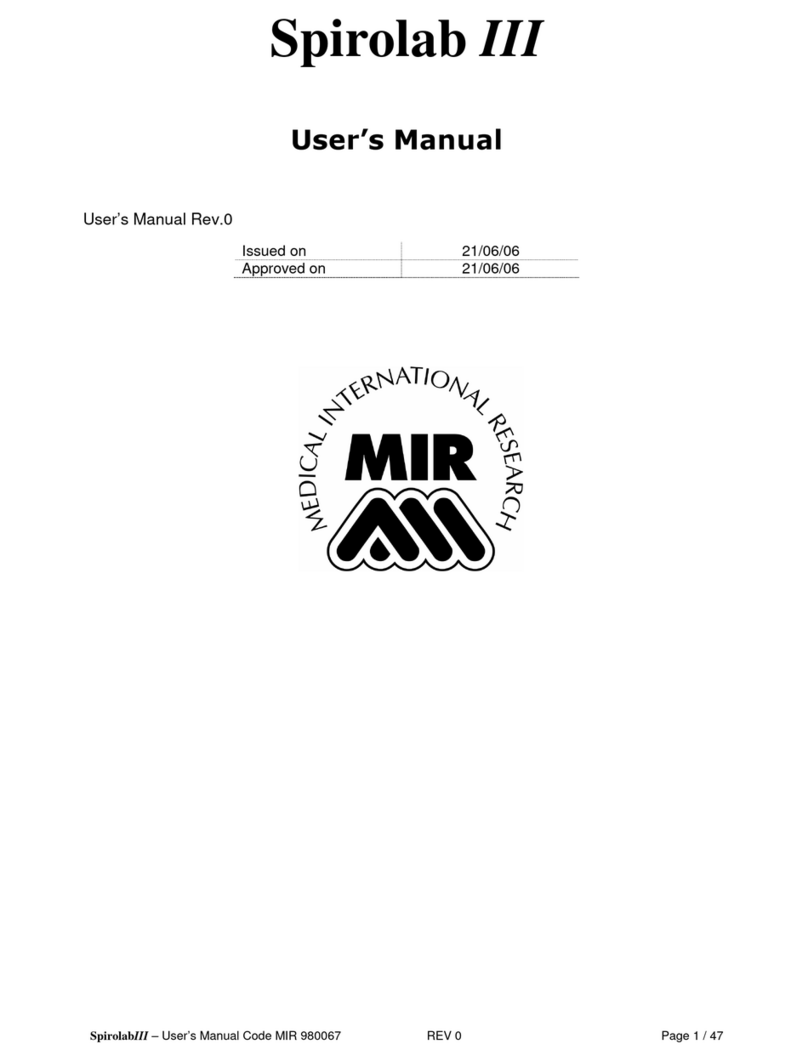spirobank G User Manual cod. 980026 Rev 2.0 Page 4 of 46
INDEX
1. INTRODUCTION............................................................................................................6
1.1 Intended Use .........................................................................................................6
1.1.1 User Category ...................................................................................................6
1.1.2 Ability and experience required .........................................................................6
1.1.3 Operating environment......................................................................................6
1.1.4 Who can or must make the installation .............................................................7
1.1.5 Subject effect on the use of the device .............................................................7
1.1.6 Limitations of use - Contraindications ...............................................................7
1.2 Important safety warnings......................................................................................8
1.2.1 Danger of cross-contamination .........................................................................8
1.2.2 Turbine..............................................................................................................8
1.2.3 Mouthpiece........................................................................................................9
1.2.4 Device .............................................................................................................10
1.3 Unforeseen errors ................................................................................................10
1.4 Labels and symbols .............................................................................................11
1.4.1 Identification label ...........................................................................................11
1.4.2 CE mark for medical devices...........................................................................11
1.4.3 Electrical safety symbol...................................................................................12
1.4.4 Warning symbol for the USB port....................................................................12
1.4.5 Warning symbol for the WEEE........................................................................12
1.4.6 FCC Warnings.................................................................................................12
1.4.7 Product description .........................................................................................13
1.5 Technical specifications .......................................................................................15
1.5.1 Features of the spirometer ..............................................................................15
1.5.2 Other features .................................................................................................16
2. FUNCTIONING OF THE spirobank G ..........................................................................17
2.1 Keyboard .............................................................................................................17
2.2 Battery Level........................................................................................................19
2.3 Information...........................................................................................................19
2.4 Service menu.......................................................................................................20
2.4.1 Turbine Calibration..........................................................................................23
2.5 Subject Data ........................................................................................................25
2.6 Displaying data from memory ..............................................................................26
2.7 Online operating mode (connected to a PC)........................................................28
2.8 Spirometry Testing...............................................................................................28
2.8.1 FVC Test.........................................................................................................30
2.8.2 VC Test ...........................................................................................................31
2.8.3 MVV Test ........................................................................................................31
2.8.4 Reading messages .........................................................................................31
2.8.5 Spirometry test interpretation ..........................................................................31
2.8.6 Viewing the spirometric parameters ................................................................33
2.8.7 POST test, after administration of drug ...........................................................34
3DATA TRANSMISSION...................................................................................................35
3.1 Data Transmission via Bluetooth for printing .......................................................35
3.2 Connection to a PC through USB port or via Bluetooth .......................................35
3.3 Upgrade Internal software....................................................................................36






































